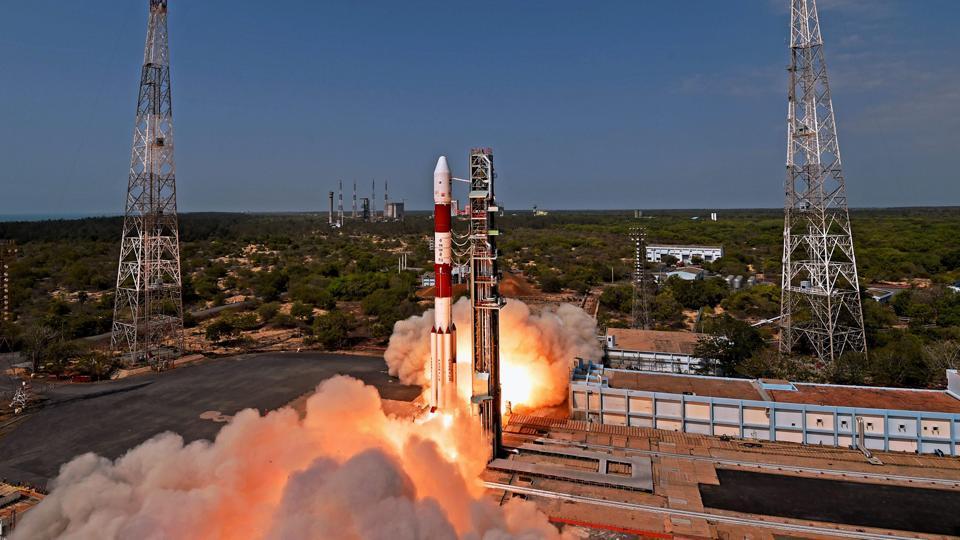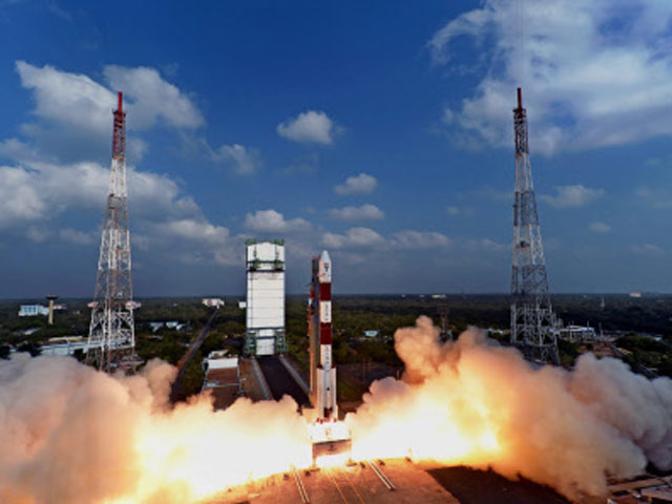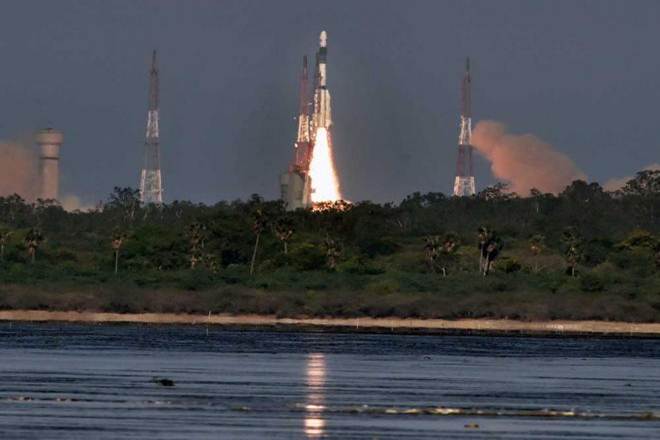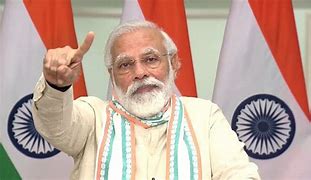Feature
India’s latest communication satellite GSAT-17 launched

Bengaluru: India’s latest communication satellite GSAT-17 was today successfully launched by a heavy duty rocket of Arianespace from Kourou in French Guiana, adding teeth to its current fleet of 17 working communication satellites.
The GSAT series of geosynchronous satellites is a system developed by the Indian Space Research Organisation(ISRO) with an objective to make the country self-reliant in broadcasting services.
The European launcher Arianespace Flight VA238 blasted off from Ariane Launch Complex No 3 (ELA 3) at Kourou, a French territory located in northeastern coast of South America at 2:45 am IST, a few minutes behind the scheduled time of 2:29 am.
The 3,477-kg GSAT-17 was injected shortly after orbiting co-passenger Hellas Sat 3-Inmarsat S EAN in a flawless flight lasting about 39 minutes.
“GSAT-17 successfully launched by Ariane-5 VA-238 from Kourou, French Guiana,” the city-headquartered ISRO announced after the mission. The designed in-orbit operational life of GSAT-17 is about 15 years, it said.
ISRO’s Master Control Facility (MCF) at Hassan in Karnataka took over the command and control of GSAT-17 immediately after its separation from the launch vehicle, and the preliminary health checks of the satellite revealed its normal functioning.
Configured around I-3K extended bus, GSAT-17 with a lift-off mass of about 3,477 kg carries payloads in Normal C- band, Extended C-band and S-band to provide various communication services.
It also carries equipment for meteorological data relay and satellite based search and rescue services being provided by earlier INSAT satellites.
GSAT-17 that will strengthen ISRO s current fleet of 17 telecommunications satellites was launched into a Geosynchronous Transfer Orbit (GTO).
This was the third satellite launch mission by ISRO this month, the other two being first developmental flight of GSLV MkIII and PSLV C-38 missions–both from Sriharikota spaceport in Andhra Pradesh.
GSLV MkIII successfully launched GSAT-19 satellite on June 5 while PSLV-C38 orbited Cartosat-2 Series satellite along with 30 co-passenger satellites on June 23 from the Satish Dhawan Space Centre.
GSAT-17 is also ISRO’s third communication satellite to successfully reach orbit in the past two months.
ISRO, which has been dependent on Ariane-5 rocket for carrying its heavier satellites, is developing GSLV Mk III for this purpose.
Announcing the successful launch of the satellite, Arianespace CEO Stephane Israel tweeted: “Confirmed: GSAT-17 has successfully separated from its #Ariane5 launcher #VA238 @ISRO.”
Thanking Arianespace, Director, Vikram Sarabhai Space Centre Dr K Sivan, who watched the launch from the mission control centre called it a “text book mission”.
Describing the launch as a special mission for ISRO, he said, “GSAT-17 is a need of the hour for ISRO and India as it provides the continuity in services of ageing two satellites, as well as augmenting our transponder capability, and widening our horizon to mobile satellite services as well as to Antarctica areas.”
GSAT-17 was the 21st satellite from ISRO to be launched by Arianespace.
In the coming days, orbit raising manoeuvres will be performed to place GSAT-17 satellite in the Geostationary Orbit (36,000 km above the equator) by using the satellite s propulsion system in steps, the space agency has said.
During the final stages of its orbit raising operations, the two solar arrays and both the antenna reflectors of GSAT- 17 will be deployed and following this, the satellite will be put in its final orbital configuration.
It said GSAT-17 will be positioned at its designated orbital slot in the geostationary orbit and will be co-located with some of the Indian operational geostationary satellites, and later it is planned to turn on the communication payloads of the satellite.
After the successful completion of all the in-orbit tests, GSAT-17 will be ready for operational use.
GSAT-17 s co-passenger Hellas Sat 3-Inmarsat S EAN is a two-payload “condosat” produced by Thales Alenia Space for Hellas Sat and Inmarsat.
Once in orbit, the Hellas Sat 3 component will deliver direct-to-home and telecom services to maintain and expand Hellas Sat s business reach, while the Inmarsat S EAN component provides the satellite portion of Inmarsat s new European Aviation Network.
Hellas Sat (member of the Arabsat Group) is a premium satellite operator, offering services in Europe, the Middle East and South Africa from the orbital position of 39 East.
Inmarsat is the leading provider of global mobile satellite communications services. The total payload carried on Flight VA238 is approximately 10,177 kg.
Entertainment
Meghalaya Reserves Legalized Gambling and Sports Betting for Tourists

The State Scores Extra High on Gaming-Friendly Industry Index
Meghalaya scored 92.85 out of 100 possible points in a Gaming Industry Index and proved to be India’s most gaming-friendly state following its recent profound legislation changes over the field allowing land-based and online gaming, including games of chance, under a licensing regime.
The index by the UK India Business Council (UKIBC) uses a scale of 0 to 100 to measure the level of legalisation on gambling and betting achieved by a state based on the scores over a set of seven different games – lottery, horse racing, betting on sports, poker, rummy, casino and fantasy sports
Starting from February last year, Meghalaya became the third state in India’s northeast to legalise gambling and betting after Sikkim and Nagaland. After consultations with the UKIBC, the state proceeded with the adoption of the Meghalaya Regulation of Gaming Act, 2021 and the nullification of the Meghalaya Prevention of Gambling Act, 1970. Subsequently in December, the Meghalaya Regulation of Gaming Rules, 2021 were notified and came into force.
All for the Tourists
The move to legalise and license various forms of offline and online betting and gambling in Meghalaya is aimed at boosting tourism and creating jobs, and altogether raising taxation revenues for the northeastern state. At the same time, the opportunities to bet and gamble legally will be reserved only for tourists and visitors.
“We came out with a Gaming Act and subsequently framed the Regulation of Gaming Rules, 2021. The government will accordingly issue licenses to operate games of skill and chance, both online and offline,” said James P. K. Sangma, Meghalaya State Law and Taxation Minister speaking in the capital city of Shillong. “But the legalized gambling and gaming will only be for tourists and not residents of Meghalaya,” he continued.
To be allowed to play, tourists and people visiting the state for work or business purposes will have to prove their non-resident status by presenting appropriate documents, in a process similar to a bank KYC (Know Your Customer) procedure.
Meghalaya Reaches Out to a Vast Market
With 140 millions of people in India estimated to bet regularly on sports, and a total of 370 million desi bettors around prominent sporting events, as per data from one of the latest reports by Esse N Videri, Meghalaya is set to reach out and take a piece of a vast market.
Estimates on the financial value of India’s sports betting market, combined across all types of offline channels and online sports and cricket predictions and betting platforms, speak about amounts between $130 and $150 billion (roughly between ₹9.7 and ₹11.5 lakh crore).
Andhra Pradesh, Telangana and Delhi are shown to deliver the highest number of bettors and Meghalaya can count on substantial tourists flow from their betting circles. The sports betting communities of Karnataka, Maharashtra, Uttar Pradesh and Haryana are also not to be underestimated.
Among the sports, cricket is most popular, registering 68 percent of the total bet count analyzed by Esse N Videri. Football takes second position with 11 percent of the bets, followed by betting on FIFA at 7 percent and on eCricket at 5 percent. The last position in the Top 5 of popular sports for betting in India is taken by tennis with 3 percent of the bet count.
Local Citizens will Still have Their Teer Betting
Meghalaya residents will still be permitted to participate in teer betting over arrow-shooting results. Teer is a traditional method of gambling, somewhat similar to a lottery draw, and held under the rules of the Meghalaya Regulation of the Game of Arrow Shooting and the Sale of Teer Tickets Act, 2018.
Teer includes bettors wagering on the number of arrows that reach the target which is placed about 50 meters away from a team of 20 archers positioned in a semicircle.
The archers shoot volleys of arrows at the target for ten minutes, and players place their bets choosing a number between 0 and 99 trying to guess the last two digits of the number of arrows that successfully pierce the target.
If, for example, the number of hits is 256, anyone who has bet on 56 wins an amount eight times bigger than their wager.




























